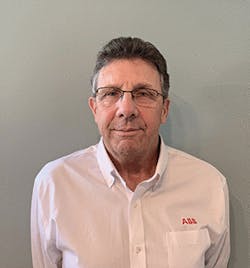Industry responding to new CEMS compliance dynamics
Continuous emissions monitoring systems (CEMS) have long played a central role in demonstrating compliance with government regulations designed to limit the introduction of pollutants into the atmosphere. At the heart of these systems are the process analyzers that continuously measure the concentration of combustion byproducts or other contaminants. These analyses, sometimes combined with a measure of gas flow through a stack, quantify the output of regulated pollutants and demonstrate compliance with—or violation of—applicable laws. Further, CEMS downtime can also land an operation in hot water, as regulations typically state an expectation of minimum system availability.
All this is to say that CEMS success starts with selecting trusted solution providers to integrate the array of necessary technologies—from sampling systems to supervisory software—to suit one’s specific compliance requirements. But the challenges don’t stop there, according to Seth Morrell, technical specialist in ABB’s CEMS Market Development group. Control caught up with Seth to gain a better understanding of the changing regulatory and industry pressures affecting CEMS compliance.
Q: What sorts of challenges are operators facing when it comes to using CEMS to demonstrate compliance with environmental regulations?
A: Environmental compliance managers face many of the same challenges that their operations counterparts do. The COVID pandemic is an acute condition that has aggravated industry’s already chronic shortage of trained technicians. And while some important regulatory changes have acknowledged technology advances and reduced the CEMS compliance workload, remote monitoring technologies are playing an increasingly important role in the maintenance lifecycle of CEMS assets.
Q: How have regulatory requirements changed, and how have those changes impacted day-to-day CEMS operations?
A: For many years, operators were required to verify the operation of their CEMS by introducing both zero and span gases to their CEMS systems every day—and to capture and report the results of those tests. This takes considerable time and effort, not to mention expense. But in 2019, the U.S. requirements were updated to allow CEMS analyzers to be spanned using a sealed reference cell containing a gas of known concentration, although the zero must still be certified daily against a baseline gas.
Senior Technical Specialist, CEMS Market Development, ABB Measurement & Analytics
[email protected], solutions.abb/emissions
The net result is that while a full calibration check involving the introduction of multiple test gases of known concentration must still be performed quarterly, that daily span check—and the expensive span gases it required—is no longer necessary. Over the lifetime of an analyzer, an operating company can save more than 75% of the labor and materials costs that otherwise would have been required—a sum that can approach $100,000 over an analyzer’s lifetime.
The span test cell can also be analyzed far more quickly than if a span gas must be introduced and allowed to flush the analyzer system. The difference is seconds rather than perhaps five or six minutes, improving data availability from the CEMS overall and helping to avoid any penalties due to missed availability targets.
Q:Clearly, the COVID pandemic has accelerated industry’s acceptance of remote monitoring to better leverage the expertise of remote subject matter experts, while simultaneously addressing a shortage of qualified personnel onsite. How does this normally play out in the case of CEMS?
A: Analyzer providers, including ABB, are equipping their increasingly smart analyzers with application-specific diagnostic tools that can alert onsite personnel to critical or emergent issues that need to be addressed. Commonly communicated over TCP/IP to onsite personnel, these alerts can also be communicated to remote analyzer specialists who can help interpret these diagnostics and even initiate remediations as part of a lifecycle maintenance agreement. Full “CEMS-as-a-service” agreements in which the CEMS provider assumes full responsibility for system availability and regulatory reporting are now commonplace in Europe, although not yet broadly adopted in the U.S.
Q: Despite the allure of easily accessible remote expertise, it seems that many operating companies may still be not so keen to have systems with a regulatory compliance role connected to the outside world. Are there other ways that companies can still tap into ABB’s expertise without a remote connection?
A: Yes, given all the hacks and recent ransomware attacks, data security has never been more critical for industry. To get around the need to bridge corporate firewalls, ABB has developed a unique approach that leverages a dynamically generated QR code on the analyzer display (see figure).
In addition to static information for system identification, the QR code contains embedded information on analyzer health status and system configuration. The technician can simply use a smartphone or other mobile device to take a picture of the QR code, then send it via email or text. It’s compatible with standard QR code reader applications as well as ABB’s “my Installed Base” (myIB) application, and represents an innovative way to enable case-specific customer support, resulting in increased availability of analyzer assets.
Q: Are there other key technology or regulatory developments that we should keep an eye on for the future?
A: Broadly speaking, the CEMS supplier community is responding to industry’s need to operate more autonomously. The remote, technology-assisted support of local personnel, who are more generalists than the CEMS specialists of yesterday, is to be expected in the future. To realize this new reality, a trusted, cooperative relationship among the operator and the CEMS technology provider ecosystem will be needed.
Looking further into the future, it’s also clear that stationary sources such as stacks won’t be the only emission sources under increased scrutiny. With society’s increasing focus on sustainability and reversing climate change, non-contact, drone-mounted analyzers that can visualize emissions from afar will be called on to keep tabs on leaks from pipelines, oil and gas fields and other non-stationary sources of methane and other greenhouse gas emissions.


